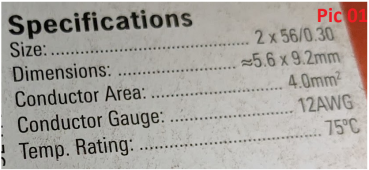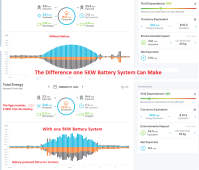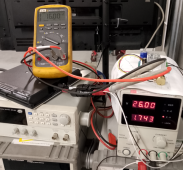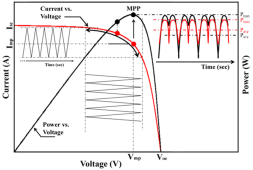Since I’m throwing out crazy ideas, I thought I’d add another one.
The risk of powering any Microinverter from a switched DC supply such as a PWM is that the high-frequency current ripple heats up and wears out the input capacitors of the Microinverter prematurely.
kundip has proven that this premature wear out is unlikely to be a concern for at least 2 years (at least when powered by a DCDC converter through a DC relay).
The 25kHz PWM controller you are using should be a worst-worst case as far as introducing high-frequency current ripple that does not exist when powering a Microinverter from a solar panel.
The massive 100,000uF capacitor you have is fantastic for characterization but not practical for an Everyman solution (too costly).
But 10,000uF capacitors of the same class as those used on the input of Microinverters are not prohibitively costly:
https://www.amazon.com/Ohmite-Current-Sense-Resistor-0-02/dp/B00DEE94UQ
So my latest thought is ‘why not use one of these 10,000uF capacitors as a canary to protect the Microinverter?’
If the PWM is connected to one of these 10,000uF 63V capacitors before connecting through an 0.1, 0.05, or 0.02 Ohm resistor to a Microinverter input with 21,600uF or 10,800uF of 63V input capacitance of its own, the 10,000uF capacitor has got to see far more current ripple at 25kHz than the input capacitors, so if that level of PWM-induced 25kHz current ripple is an issue, the 10,000uF capacitor should burn out far before any of the Microinverter’s input capacitors.
An idealized model would have the MPPT of the Microinverter switching between 25V and 24.8V @ 60Hz for 125W of input power (through a 100mOhm resistor), while the PWM maintains an output averaging 24.8 V for 16.7mS followed by 25.0V for 16.7mS by pushing out 10A for 20uS followed by pushing out 0A for 20uS (so 5A of output current on average).
The Microinverter is also Maintaining an average input current of 5A but at 60Hz, drawing 10A for 16.7mS while the MPPT puts 24.8V on the input followed by 0A for 16.7ms while the MPPT puts 25.0V on the input and the PWM gets it’s output charged up to 25.0V as well (in 20uS steps every 40uS).
Worst-case currents across the 0.1 Ohm resistor (and hence the input capacitors) at 25kHz would be 0.2V / 0.1Ohm = 2A for 20uS, but that current is primarily stepping PWM output voltage up to 25.0V and then down to 24.8V @ 60Hz, so 25KHz current ripple impacting the input capacitors is much less…
In fact, now that I think about it, the input capacitance at 25.0V will draw current across the 100mOhm resistor when the MPPT drops voltage to 24.8V so the vast majority of ripple current on the input capacitors will be at 60Hz, as it is in the case of being powered by a solar panel…









